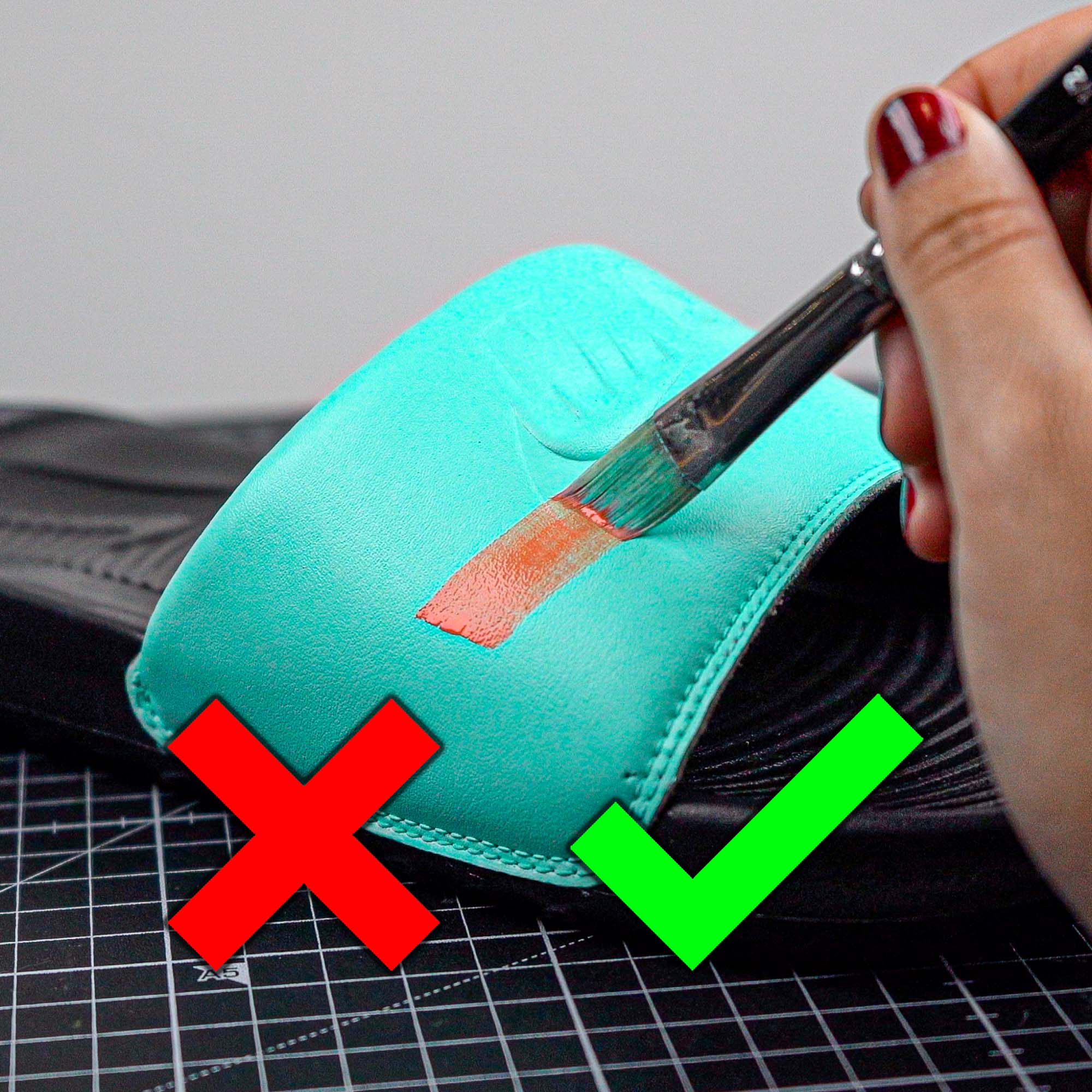A follow up to our most popular YouTube video ever, we bring you the Do’s & Don’t of Angelus Paint Part 2! Watch the full video here, and/or keep reading to get all of the same knowledge in text form.
Don’t: Painting over a previously painted surface without prepping.
If you want to paint over an already painted surface, such as shoes that have already been customized, you will want to “re-prep” the shoe as much as possible. This means using Angelus Leather Preparer & Deglazer to remove as much of the previous finish and paint as possible, revealing the raw leather, and allowing the new paint to bond with the leather much better!

Do: Use correct brush sizes.
While you may want to make your cleanup as quick as possible and just use one brush, you will get much better final results using different brushes depending on what you are painting. For example, Use larger brushes to cover more area, but small brushes for line work (and the tiniest of brushes for the tiniest of details).

Do: Add the correct amount of Paint Additive to mixes.
When using Angelus Paint Additives with your Angelus Paints, make sure to use the correct ratios. Angelus Paint Additives greatly expand what you can use Angelus Paints for, but using too much or little could keep you from getting the results that you want. For example, using too much 2-Thick or Duller can make the paint less durable or flexible, which you definitely don’t want!
Here are the following ratios for you to follow.
2-Thin Paint Thinner= 1:4 Ratio (2-Thin to Paint)
2-Thick Paint Thickener = 2-20% 2-Thick
2-Hard Plastic Adhesion Promoter = 50-57% 2-Hard
2-Soft Fabric Medium Additive = 1:1 Ratio
Duller Gloss Reducer = 5-8% Duller

Do: Quick Taping Method
When taping over panels, especially Nike Swooshes, try taping over the entire thing, pressing into the crease with your nail, and then carefully cutting away the excess tape with a Detail Knife. This can save you lots of time as opposed to trying to lay the tape perfectly along the edge of the panel.

Don’t: Add too few coats of paint.
It can be tempting to use as few coats as possible when painting large areas, especially with a color that is very opaque like Black. However, adding too few coats can limit the strength of the paint. We recommend 4-5 layers of paint when working on wearable customs. The exception is for line work and small details as these do not cover large areas.

Don’t: Not thinning paint before airbrushing.
While Angelus Paint can be run through an airbrush straight out of the bottle if the nozzle is .5mm or larger. For smaller airbrush nozzles, or older paint that has thickened over time, make sure to thin the paint using Angelus 2-Thin.
Even with fresh paint and a .5mm nozzle size, most people still like to thin their paint a bit with 2-Thin for an easier flow. Thinning paint will also make pouring your paint through a paint strainer a much quicker process, which is very important to prevent small bits of dried paint or debris from entering your airbrush and causing clogging.

Don’t: Not cleaning your airbrush in between uses.
Not cleaning your airbrush between uses can lead to a clogged up airbrush that doesn’t spray evenly, or in some cases, at all.
In between each use, make sure to run some Angelus Brush Cleaner through your airbrush to clear out any left over paint. A cool trick is to pour in some Brush Cleaner, cover the nozzle with a paper towel, and pull the trigger until you see bubbles forming. Then remove the paper towel and spray out the solution. Along with it with be most of that leftover paint. Then use a cotton swab to get the rest.
Every couple uses it is best to use a proper Airbrush Cleaning Kit to deep clean your airbrush gun and keep it in mint condition. To do this, take apart your gun and deep clean each piece using the needles and brushes included in the kit.

Follow Angelus Direct for more custom inspiration and creative insights!

